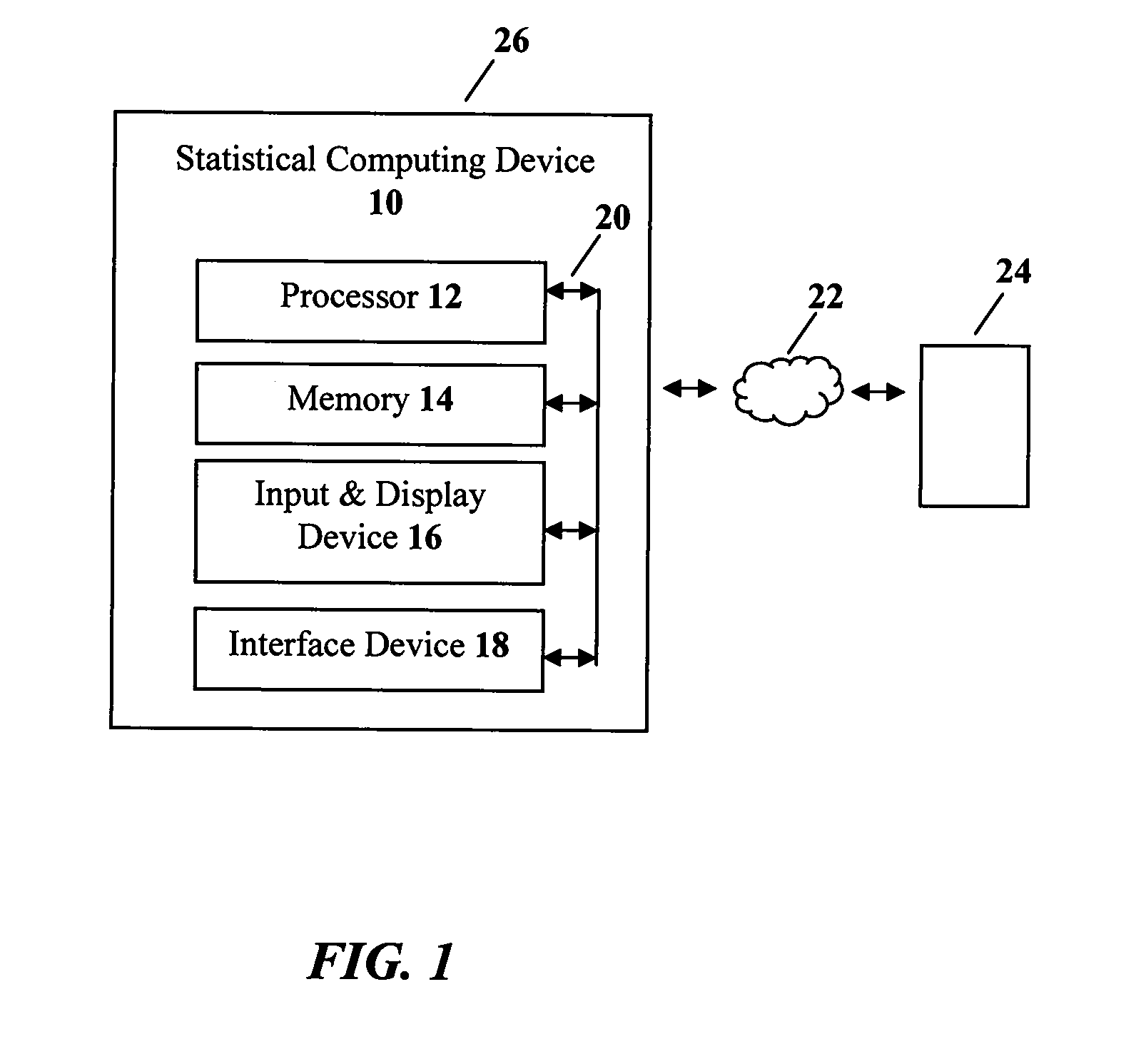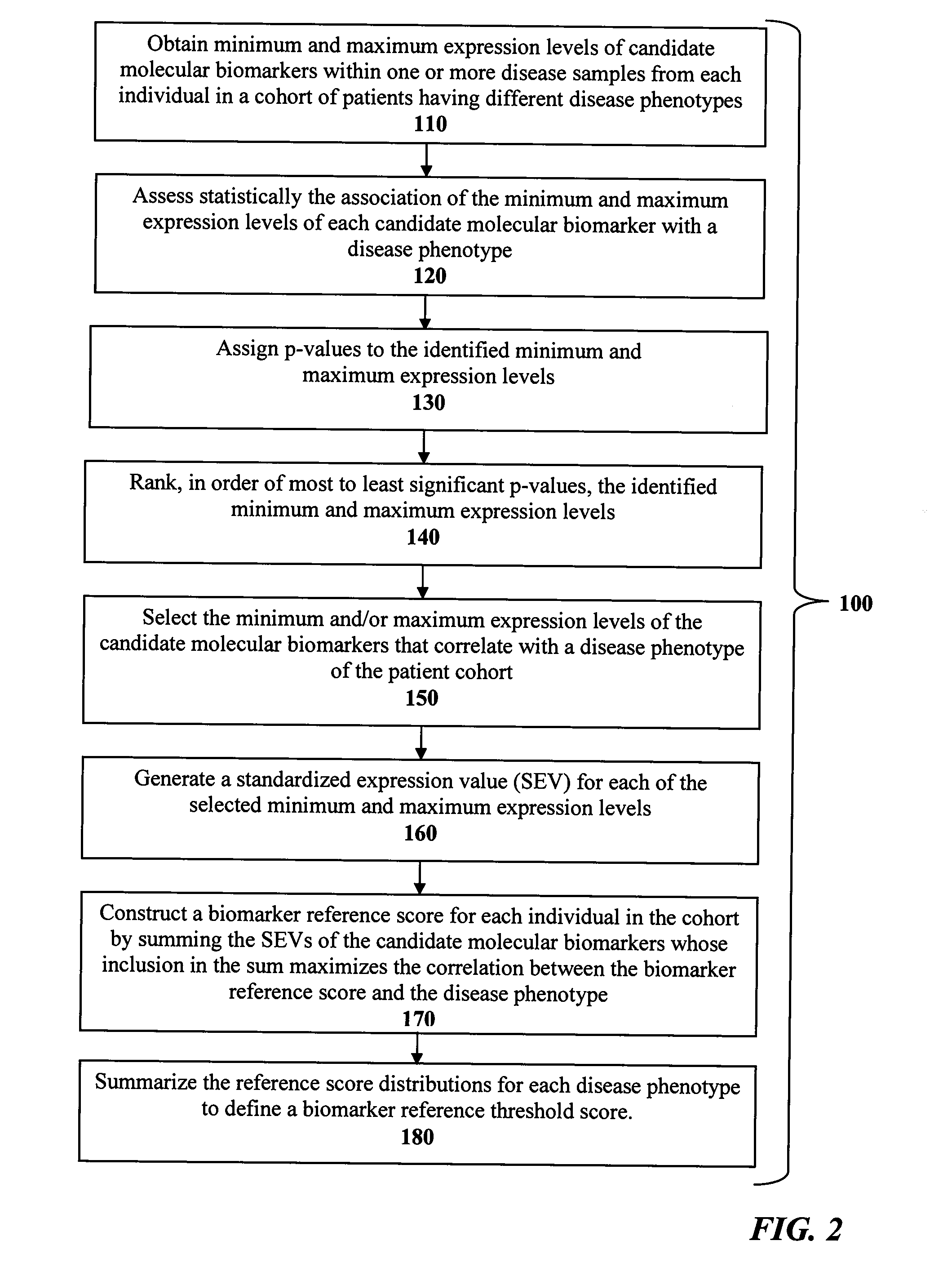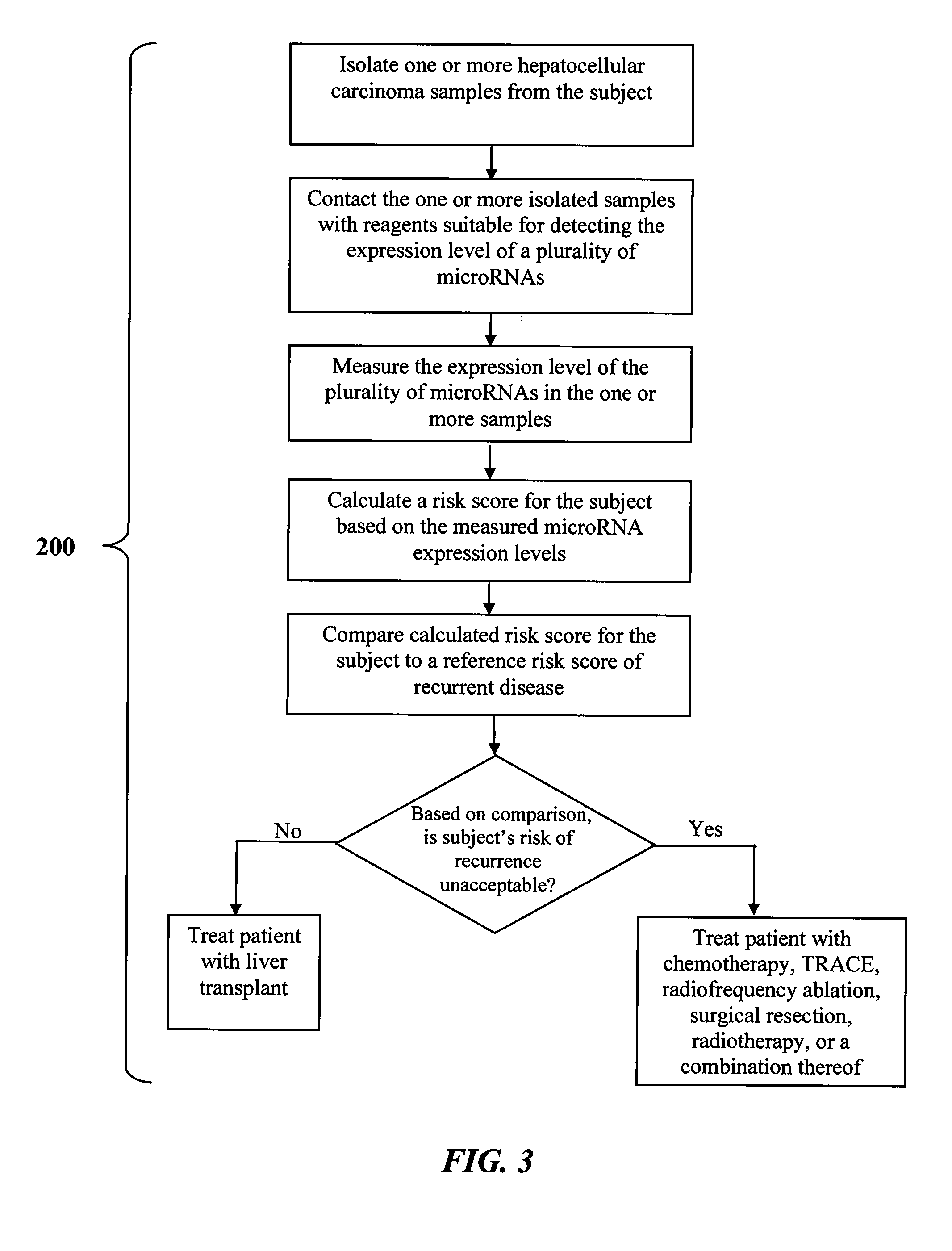Multifocal hepatocellular carcinoma microrna expression patterns and uses thereof
a multi-focal hepatocellular carcinoma and expression pattern technology, applied in the field of multi-focal hepatocellular carcinoma microrna expression pattern, can solve the problems of not assessing individual tumor biology and risk of recurrence or overall survival, defining such gene expression signatures, and not addressing the problem of multifocal tumors and their different expression signatures
- Summary
- Abstract
- Description
- Claims
- Application Information
AI Technical Summary
Benefits of technology
Problems solved by technology
Method used
Image
Examples
example 1
Quality Assessment of miRNA Purified from FFPE Tissues
[0128]High yields of miRNA were consistently obtained from FFPE blocks based on electrophoresis and spectroscopy (FIG. 4). Furthermore, when miRNA obtained from freshly frozen cell lines was hybridized to the arrays and these results were compared to array hybridization of miRNA from the same cell lines that had first been FFPE, an excellent correlation was noted (R2=0.88-0.90, FIG. 5).
example 2
Quality Metrics and Univariate Analysis
[0129]Seven arrays were removed due to poor quality as assessed by one of the six quality metrics considered. This resulted in 88 samples and 64 subjects for further analysis. The MIN-MAX procedure yielded 1694 features based on 847 probes. The univariate analysis yielded 60 significant features at 20% FDR (Table 2). A majority of the miRNAs distinguishing recurrence from nonrecurrence have been shown by others (Budhu et al., “Identification of Metastasis-Related MicroRNAs in Hepatocellular Carcinoma,”Hepatology 47:897-907 (2008); Sato et al., “MicroRNA Profile Predicts Recurrence After Resection in Patients With Hepatocellular Carcinoma Within the Milan Criteria,”PLoS One 6:e16435 (2011), which are hereby incorporated by reference in their entirety) to be relevant to hepatocellular carcinogenesis. One may expect both the MIN and MAX feature for some probes to be significant, particularly when there tends to be smaller variation within a multif...
example 3
Unsupervised Hierarchical Clustering Results are Refined Using MIN-MAX
[0130]The results of unsupervised hierarchical clustering of all 88 samples (using all 847 miRNA probe sets without MIN-MAX) show that patients with recurrent disease tend to cluster together (FIG. 6A). Employing the MIN-MAX method reduces the results to 64 patients with a very similar clustering, suggesting that information is not grossly distorted or lost as a result of the MIN-MAX procedure (FIG. 6B). When the MIN-MAX method is applied and then a univariate Cox regression analysis is performed, clustering of the patients using probes with FDR<0.2 reveals a clearer distinction between recurrent and nonrecurrent patients (FIG. 6C). To further investigate the clustering between recurrence and nonrecurrence samples, the first two principal components were examined (FIG. 7). As observed in the hierarchical clustering, there is a cluster of primarily recurrence samples and a cluster of mixed recurrence and nonrecurre...
PUM
| Property | Measurement | Unit |
|---|---|---|
| Concentration | aaaaa | aaaaa |
| Size | aaaaa | aaaaa |
| Level | aaaaa | aaaaa |
Abstract
Description
Claims
Application Information
 Login to View More
Login to View More - R&D
- Intellectual Property
- Life Sciences
- Materials
- Tech Scout
- Unparalleled Data Quality
- Higher Quality Content
- 60% Fewer Hallucinations
Browse by: Latest US Patents, China's latest patents, Technical Efficacy Thesaurus, Application Domain, Technology Topic, Popular Technical Reports.
© 2025 PatSnap. All rights reserved.Legal|Privacy policy|Modern Slavery Act Transparency Statement|Sitemap|About US| Contact US: help@patsnap.com



